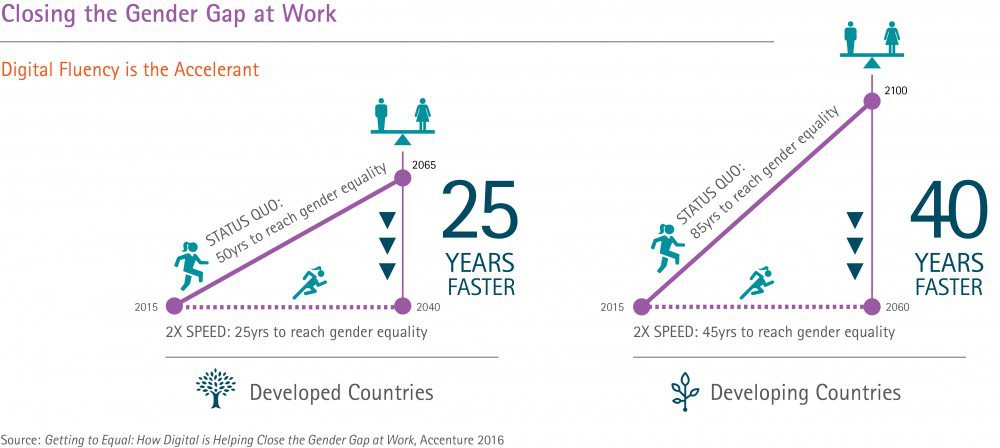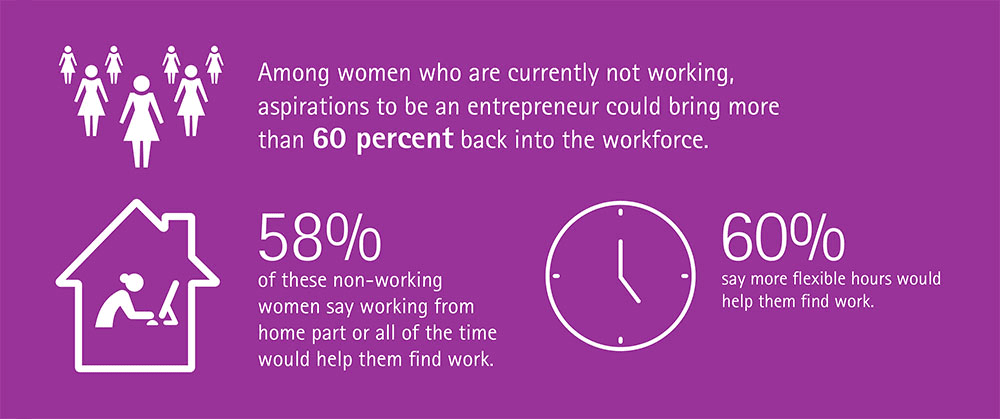This study appears courtesy of Accenture. The full study is available on the Accenture website.
Download the full report: Getting to Equal: How Digital is Helping Close the Gender Gap at Work

Introduction
It’s a well-documented fact that women are lagging men in workplace equality. Different reports have pegged the time to gender parity at as much as 100 years. Now new Accenture research is proving that digital fluency—the extent to which both men and women have embraced digital technologies to become more knowledgeable, connected and effective—is helping to close this gender gap and level the playing field for women in the workplace.
Our Digital Fluency Model examines the impact of digital technologies across women’s entire career lifecycle. We surveyed nearly 5,000 women and men in 31 countries to gauge their familiarity with digital technologies. We found that, while men outscore women in digital fluency across almost all of the 31 countries we studied, that gap is narrowing and digital fluency acts as an accelerant in every stage of a person’s career—a powerful one in education and in the workplace, and an increasingly important one as they advance into the ranks of leadership.
Why is this? Digital fluency is helping today’s workers better manage their time and become more productive. Digital fluency also enables greater work flexibility—an amenity that workers value and companies are now providing. While men and women alike are liberated by the balance that work flexibility affords, women appear to derive greater value from it.
Getting on the right side of the digital fluency gap can change the picture for women—and their countries—in dramatic ways.
Methodology
We looked at gender equality in the workplace through three specific areas: how women use education in preparing for work; how they do at finding and keeping a job; and how they do in advancing in their careers. In measuring women’s progress in education and workplace participation, we looked at data from the World Bank regarding education enrollment and labor participation rates. For advancement, we looked at pay as well as OECD rates of women in managerial roles. Our research shows that digital is helping to drive improvements in these areas for women.
Key Findings:
If governments and businesses can double the pace at which women become digitally fluent, we could reach gender equality in the workplace by 2040 in developed nations and by 2060 in developing nations.

- Digital has had a positive impact on the women’s education and employment opportunities. And the future looks promising as millennials mature and move into the ranks of leadership at work.
- Because women are underrepresented in the workplace in most countries, they are a significant source of untapped talent.
- Women have higher levels of education than men in 16 of the 31 countries surveyed.
- Nations with higher rates of digital fluency among women have higher rates of overall gender equality.

Accenture is a leading global professional services company, providing a broad range of services and solutions in strategy, consulting, digital, technology and operations.



